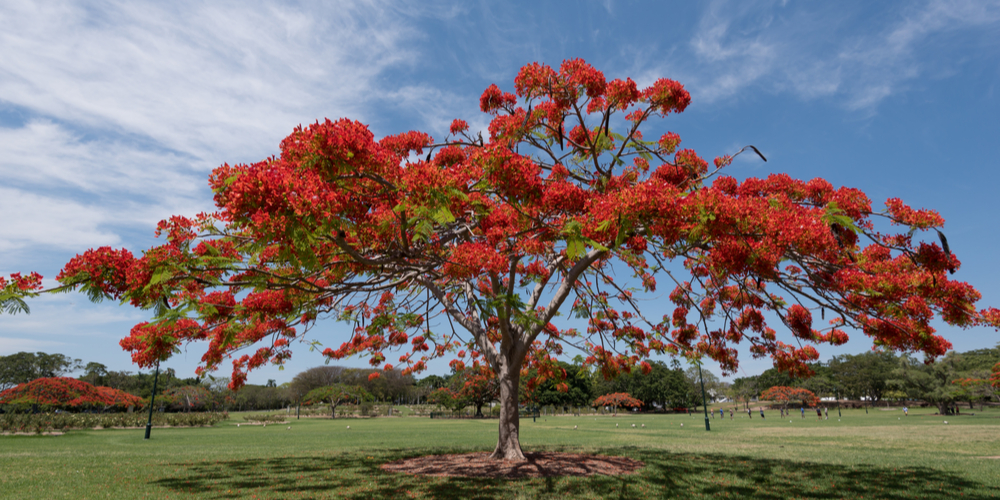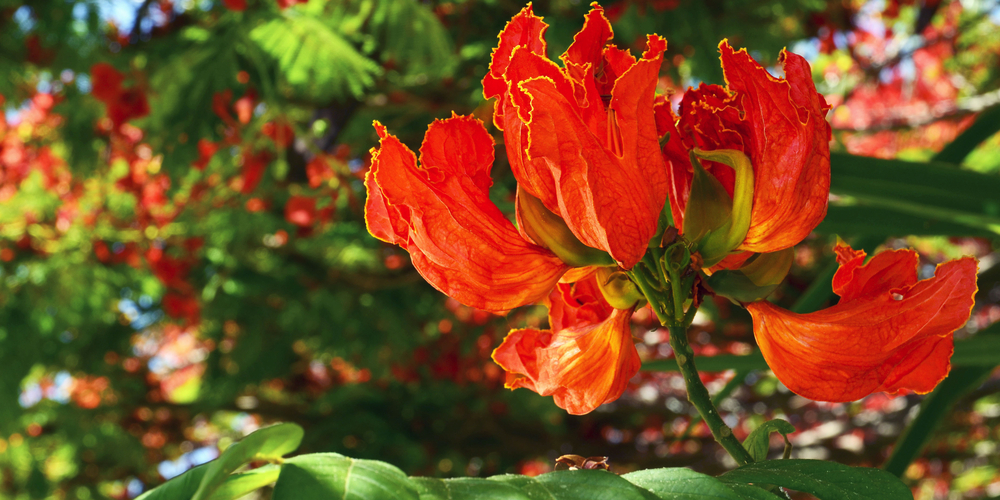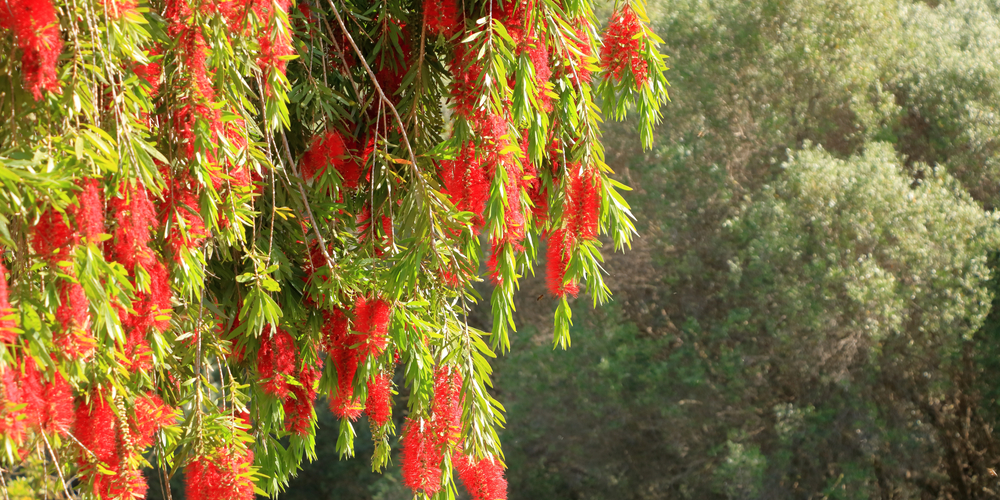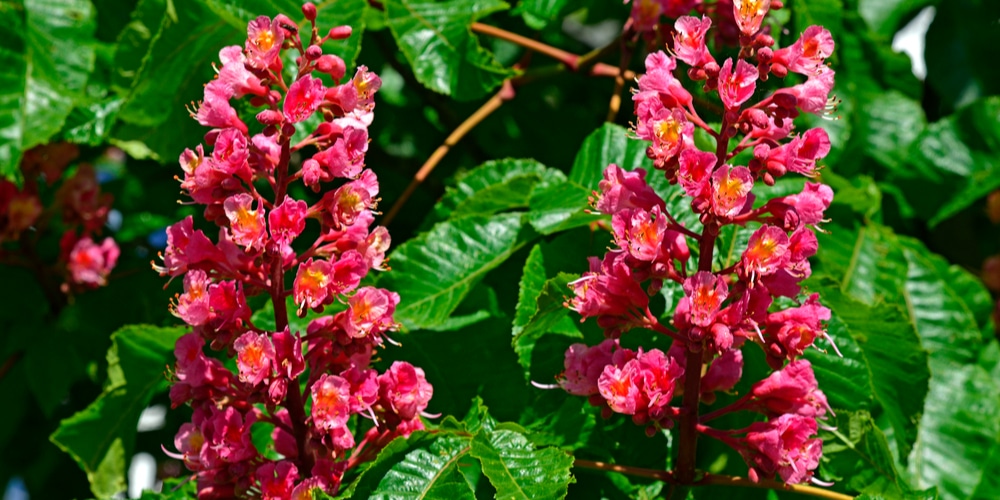Florida, the “Sunshine State,” is celebrated for its vast wilderness and pristine beaches. It is one of the top destinations in the world, with millions of visitors flocking to its sandy coasts year-round to enjoy local culture and indulge in its beautiful views.
There are many fauna and flora native to Florida in a variety of colors. It may be iconic for its palm trees pictured on postcards, but Florida has any number of gorgeous trees. One of the more common sights, especially in the southernmost part of the peninsula, are trees whose flowers take on a vibrant red. Here are four.
Royal Poinciana

In the tropical climate, Delonix regia or “Royal Poinciana” is a hallmark of living in Southern Florida. You’ll come to recognize it if you have lived there for any length of time. This tree, with its royal red flowers and wide canopy, can be found all across the state’s southern half because it thrives in tropical climates.
It is a fast-growing tree that can reach heights of up to 50 feet. The Royal Poinciana’s canopy can spread wider than tall, with maximum widths exceeding 60 feet! It delights in wet soil and complete sun exposure, so bear that in mind when choosing where to plant it!
Royal Poinciana trees will begin flowering after approximately four years. Once they have established themselves and are rooted well, they will shoot up practically overnight, gaining multiple feet annually in their early stages of development. As deciduous trees, they do shed their lives in the colder months. However, in Southern Florida, the winters are exceedingly short.
African Tuliptree
This gorgeous, forest-dwelling tree sprouts blossoms of a reddish-orange hue that have earned it the nickname “flame of the woods.” Spathodea campanulata is a quickly-growing deciduous tree that thrives in the tropical climate of Southern Florida, like the Royal Poinciana. It can reach heights of up to 80 feet, averaging a growth rate of six feet annually.
While the tree prefers rich soil, so long as you carefully attend to it and provide ample fertilizer, it can make do in just about any type. The African Tulip is distinguishable by its cup-like flowers that bloom in the spring, capturing water and dew and making them attractive to many bird species. However, its natural defenses have been known to kill pollinators such as bees.
You should note that they have been nominated as a class 3 pest and are among the top 100 worst invaders in the world. To plant them is likely not recommended. That does not mean you cannot appreciate their beauty but know that they are pushing out indigenous flora and crowding forests.
Bottlebrush Tree
If you live along the coast and want to liven up your garden with gorgeous trees, consider investing in the Bottlebrush Tree, Melaleuca linearis. While it is not a standard garden tree and is generally not viewed as ornamental, its bottle-shaped, spiny blooms are undoubtedly eye-catching. It will set any hedge line or property apart in just a few years!
A hardy plant, they have been known to be tolerant to salt-entrenched soils, meaning that those living near Southern Florida’s shorelines can enjoy seeing them. Since they are not native to Florida but rather Queensland, Australia, their presence can be attributed to imports. However, unlike the African Tulip Tree, they are not classified as a pest and are appreciated for their contributions to gardens across Central and Southern Florida.
The Bottlebrush has both a rigid and weeping variety, as well. Both typically only reach about 20-25 feet in adulthood, and unlike the Royal Poinciana, their canopies are not alarmingly large. They tend to thrive in tropic to sub-tropic environments, so it would not be a poor choice to incorporate them into your yard.
Red Buckeye
Thriving in North and Central Florida, the Red Buckeye, Aesculus Pavia, is popular for its springtime clusters of bright red flowers. At its tallest, underneath ideal soil and partial sunlight, it may reach 20 feet.
It is not so hardy during droughts and should be regularly irrigated so it does not suffer any adverse effects caused by dry, nutrient-depleted earth. In the summer, as seed pods begin to appear, stay aware that they are toxic to humans.
Children may want to ingest them, so remain vigilant. The fruit of this tree is also harmful to people, so while the rich red berries may be tantalizing, do not consume them and call poison control if you know somebody that does.
This plant is very ornamental, no matter the season. Its bark is papery and a luxurious shade of light brown, so whether flowers are dotting its foliage or fruit, you are in for a visual treat. To establish your Red Buckeye, it is advised to plant it in the late fall or winter for the best results.
You may also be interested in beautiful Florida trees with orange flowers.


